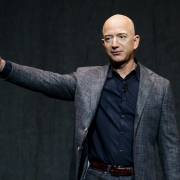Does technology provide a competitive advantage? Companies are counting on it. In March McDonald’s spent $300 million buying an Israeli artificial-intelligence startup to personalize menus based on weather and trending items. Now they’re considering license-plate recognition systems for drive-through lanes. Based on your history they might offer to supersize your order, or just hand you your usual Happy Meal. CEO Steve Easterbrook says, “Technology is a critical element of our Velocity Growth Plan.”
The problem is that adopting a useful technology doesn’t mean your advantage will last. I’ve long been amused by a succession of Harvard Business Review pieces that demonstrate this point. In 1985 Michael E. Porter wrote “How Information Gives You Competitive Advantage,” then in 1990 came Max Hopper’s “Rattling SABRE—New Ways to Compete on Information,” and finally in 2013 we got Rita Gunther McGrath’s “The End of Competitive Advantage.” Each of these takes describes a different stage in the life cycle of corporate tech.
Hopper was, as Harvard professor James Cash noted, “the first person who really defined the marketing leverage that could come from using technology.” In the late 1950s Hopper helped build Sabre, an automated flight-reservation system, and in 1981 he helped design the first major frequent-flier program to give American Airlines a competitive “AAdvantage.” Yet by 1990 he worried that the game was over, suggesting that technology was “table stakes for competition.” Hopper noted that “SABRE’s real importance to American Airlines was that it prevented an erosion of market share.”
That insight comes to mind watching the Streaming War of 2019. Netflix and Amazon have a huge lead in streaming video. But eventually everyone uses the same technology.
Tim Cook wants in, so Apple TV+ launches Nov. 1 with (probably overpaid) Jennifer Aniston and Reese Witherspoon. Robert Iger wants in, and Disney paid (probably too much) for control of BAMTech, the streaming-video technology developed by Major League Baseball, which it is deploying for streaming services Disney+, ESPN+ and Hulu + Live TV. AT&T wants in and paid (again likely too much) for Time Warner to create HBO Max. NBCUniversal wants in too. See the trend? Google ought to rename its streaming service YouTube TV Max+.
Yet when a company adopts a new technology, it can’t set it and forget it. Staying ahead requires new features and constant upgrades. Hopper described a “technology treadmill” and said “companies will either master and re-master the technology or die.” He was right. As Intel competed against the Japanese in semiconductors, it sold its microprocessors at a high margin so it could afford more research and development to maintain its advantage.
Amazon and Google lead the world in R&D spending. Apple and Facebook are in the top 25. Disney and AT&T are not. Google’s capital spending, mostly on data centers, totaled $25 billion last year—a 91% year-over-year increase! Amazon spent $28 billion, though a lot of that was on warehouses. Disney? Barely $5 billion.
Does Mr. Iger even know what’s coming? Disney spends large sums on studios and rides that last decades (the Haunted Mansion opened in 1969). Its streaming service on the other hand will require—well, you gotta feed the beast.
So it’s spend, spend, spend. Plus, the best coders want to work somewhere that’s growing and has a hot stock—the opposite of Hollywood, where studios strike high-cash deals like Sony paying Dwayne “The Rock” Johnson $23 million to star in “Jumanji: The Next Level.” Sure, Disney’s stock has done well, but it isn’t near tech’s trillion-dollar valuations.
In 2000 Hopper told Computerworld, “I can’t envision too many years when companies will run anything of their own. It will be outsourced to specialists that have the scale and scope to do it, and do it a lot better than they can afford to do it for themselves.” I worry Disney and even AT&T don’t have the margin structure to afford the yearly costs. Remember showman Billy Rose’s quote: “Never invest your money in anything that eats or needs repainting.”
So yes, technology can provide a competitive advantage, but you have to have the right margin structure to maintain that advantage—to afford the food and paint.
Who has the right setup? Google has a gross margin of 56%. It can afford a lot of R&D and spending. Facebook’s is 80%. Amazon’s is 29%, but I’d wager its cloud service has a 60% or 70% gross margin. AT&T’s is 54%—not bad, but most will be eaten up by its 5G rollout. What about Disney? Only 37%. True, Netflix’s is also 37%, but it may soon sag under the weight of content and distribution costs. Oddly, McDonald’s is a healthy 53%.
Today every company wants to reinvent itself as a tech firm, but they should be careful what they wish for. The surefire approach is using data to capture and keep customers, even for Big Macs. Once a company steps on the technology treadmill by investing in a new system, it better run fast. Tech investing used to be about chips and software, but as it becomes more about using technology more innovatively than your competitor, more companies are vulnerable to the Hopper syndrome of remaster or die.
This article first appeared at wsj.com.













